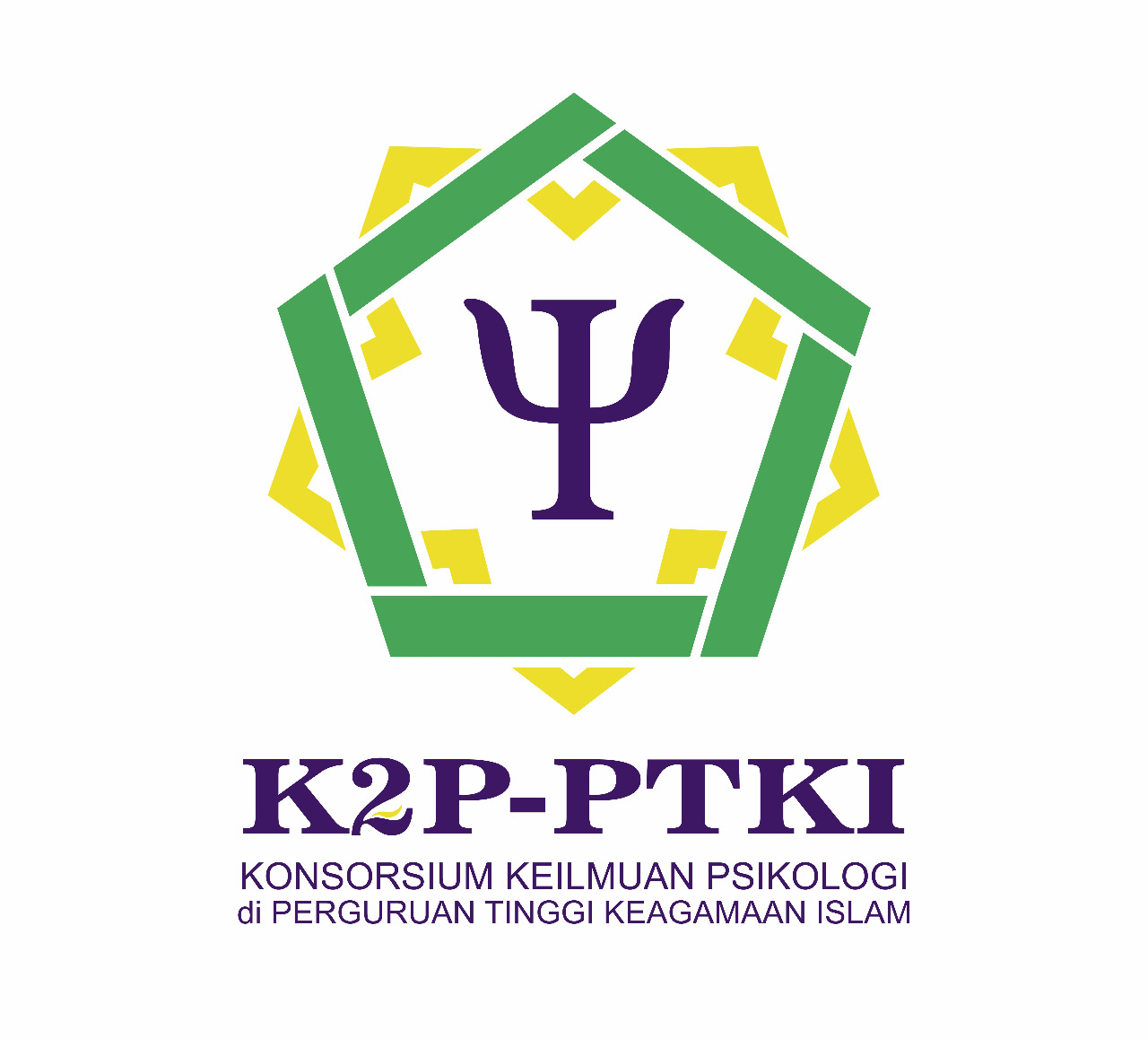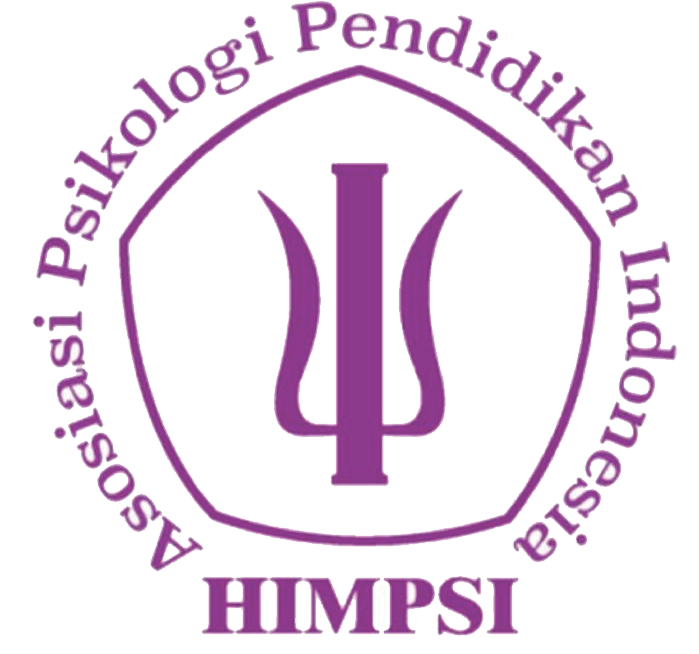Expressed Emotion, Alcohol Use Disorder Tendency and The Moderating Role of Congruence Among Unemployed Young Adult Males
Abstract
Keywords: expressed emotion; alcohol use disorder tendency; congruence
Keywords
Full Text:
PDFReferences
Al Ubaidi, B. A. (2018). Expressed emotion as a participant of depression relapse. Journal of Community and Preventive Medicine, 1(2). https://doi.org/10.33309/2638-7719.010208
American Psychiatric Association. (2022). Diagnostic and statistical manual for mental disorders. Fifth-Text Revised). American Psychiatric Association Publishing.
Anacker, A. M. J., & Ryabinin, A. E. (2010). Biological contribution to social influences on alcohol drinking: Evidence from animal models. International Journal of Environmental Research and Public Health, 7(2), 473–493. https://doi.org/10.3390/ijerph7020473
Babor, T., Higgins-Biddle, J. C., Saunders, J. B., & Monteiro, M. G. (2001). The alcohol use disorders identification test: Guidelines for use in primary care. Geneva: World Health Organization. http://scholar.google.com/scholar?hl=en&btnG=Search&q=intitle:The+Alcohol+Use+Disorders+Identification+Test:+Guidelines+for+Use+in+Primary+Care#9
Barlow, D. H., & Durand, V. M. (2017). Abnormal psychology: An integrative approach: an integrative approach. Stamford, CT: Cengage Publisher. https://thuvienso.hoasen.edu.vn/handle/123456789/9823%0Ahttp://books.google.com/books?id=yITxaqlS_yMC&pgis=1
Barr, T., Helms, C., Grant, K., & Messaoudi, I. (2016). Opposing effects of alcohol on the immune system. Progress in Neuro-Psychopharmacology and Biological Psychiatry, 65, 242–251. https://doi.org/10.1016/j.pnpbp.2015.09.001
Botes, J., & Schenck, R. (2015). “If a person uses Alcohol the real you comes out”: Exploring the self, sexual experiences and substance abuse. Social Work (South Africa), 51(1), 101–114. https://doi.org/10.15270/51-1-430
Brown, G. W., Birley, J. L., & Wing, J. K. (1972). Influence of family life on the course of schizophrenic disorders: a replication. The British Journal of Psychiatry : The Journal of Mental Science, 121(562), 241–258. https://doi.org/10.1192/bjp.121.3.241
Cohen, J., Tracy, S., Rodriguez, F., & Bowers, R. (2020). Therapeutic change factors in alcoholics anonymous. The Person Centered Journal, Vol.25(Issue 2).
Cole, J. D., & Kazarian, S. S. (1988). The level of expressed emotion scale: A new measure of expressed emotion. Journal of Clinical Psychology, 44(3), 392–397. https://doi.org/10.1002/1097-4679(198805)44:3<392::AID-JCLP2270440313>3.0.CO;2-3
Collins, S. E. (2016). Associations between socioeconomic factors and alcohol outcomes. Alcohol Research: Current Reviews, 38(1), 83–94.
Crisostomo, S. (2021). 40% of pinoys drink, 15% smoke – DOH survey. Inquirer.net. https://www.philstar.com/nation/2021/08/18/2120717/40-pinoys-drink-15-smoke-doh-survey#:~:text=MANILA%2C Philippines — Around 40.1 percent,the survey%2C done in January.
Domingo, R. W. (2023). Jobless rate rose to 4.8% in January 2023 | Inquirer Business. https://business.inquirer.net/390130/jobless-rate-rose-to-4-8-in-january-2023
ENDS, E. J., & PAGE, C. W. (1957). A study of three types of group psychotherapy with hospitalized male inebriates. Quarterly Journal of Studies on Alcohol, 18(2), 263–277. https://doi.org/10.15288/qjsa.1957.18.263
Fahrer, J., Brill, N., Dobener, L. M., Asbrand, J., & Christiansen, H. (2022). Expressed emotion in the family: A meta-analytic review of expressed emotion as a mechanism of the transgenerational transmission of mental disorders. Frontiers in Psychiatry (Vol. 12). https://doi.org/10.3389/fpsyt.2021.721796
Feist, J., Feist, G. J., & Tomi-Ann, R. (2018). Theories Of Personality (9th ed.). McGraw-Hill Education.
Foran, H. M., & O’Leary, K. D. (2008). Alcohol and intimate partner violence: A meta-analytic review. Clinical Psychology Review, 28(7), 1222–1234. https://doi.org/10.1016/j.cpr.2008.05.001
Geiser, C. (2021). What could be the possible reason for non-significant moderation? https://www.researchgate.net/post/What_could_be_the_possible_reason_for_non-significant_moderation/61b68be58bfb96066427fa0a/citation/download
Gerlsma, C., Van der Lubbe, P. M., & Van Nieuwenhuizen, C. (1992). Factor analysis of the level of expressed emotion scale, a questionnaire intended to measure “perceived expressed emotion.” British Journal of Psychiatry, 160(MAR.), 385–389. https://doi.org/10.1192/bjp.160.3.385
Goyala, J. E. P. (2019). Traditional Filipino family values that make us distinct among others. Medium. https://medium.com/@janeellapangoyala/traditional-filipino-family-values-that-make-us-distinct-among-others-7a439fdfd28a
Grossman, E. R., Benjamin-Neelon, S. E., & Sonnenschein, S. (2020). Alcohol consumption during the covid-19 pandemic: A cross-sectional survey of us adults. International Journal of Environmental Research and Public Health, 17(24), 1–10. https://doi.org/10.3390/ijerph17249189
Hale, W. W., Raaijmakers, Q. A. W., Gerlsma, C., & Meeus, W. (2007). Does the level of expressed emotion (LEE) questionnaire have the same factor structure for adolescents as it has for adults? Social Psychiatry and Psychiatric Epidemiology, 42(3), 215–220. https://doi.org/10.1007/s00127-006-0145-0
Hoyt, W. T., Imel, Z. E., & Chan, F. (2008). Multiple regression and correlation techniques: Recent controversies and best practices. Rehabilitation Psychology, 53(3), 321–339. https://doi.org/10.1037/a0013021
Hull, J. G. (1981). A self-awareness model of the causes and effects of alcohol consumption. Journal of Abnormal Psychology, 90(6), 586–600. https://doi.org/10.1037/0021-843X.90.6.586
Hung, C. C., Yen, L. L., & Wu, W. C. (2009). Association of parents’ alcohol use and family interaction with the initiation of alcohol use by sixth graders: A preliminary study in Taiwan. BMC Public Health, 9. https://doi.org/10.1186/1471-2458-9-172
Ilma, V. A., & Muslimin, Z. I. (2020). Self-acceptance from aqidah and gender perspectives. Annual International Conference on Social Sciences and Humanities. https://doi.org/10.2991/assehr.k.200728.044
Indeed Editorial Team. (2022). How unemployment affects individuals and the economy. https://www.indeed.com/career-advice/career-development/effects-unemployment
International, M. (2021). Philippines: New survey data illustrate alcohol harm, but alcohol taxation provides solution - Movendi International. https://movendi.ngo/news/2021/08/26/philippines-new-survey-data-illustrate-alcohol-harm-but-alcohol-taxation-provides-solution/
Javier, J. R., Galura, K., Aliganga, F. A. P., Supan, J., & Palinkas, L. A. (2018). Voices of the Filipino community describing the importance of family in understanding adolescent behavioral health needs. Family and Community Health, 41(1), 64–71. https://doi.org/10.1097/FCH.0000000000000173
Jhangiani, R., Tarry, H., Hammond Tarry, B., & Victoria, B. C. (2022). Principles of social psychology-1st international H5P edition under a CC BY 4.0 licence (pp. 327–330). https://opentextbc.ca/socialpsychology/chapter/obedience-power-and-leadership/
Jin, J. (2016). Dietary guidelines for Americans. JAMA - Journal of the American Medical Association (9th ed., Vol. 315, Issue 5, p. 528). https://doi.org/10.1001/jama.2016.0077
Johnson, B. (2001). Toward a new classification of nonexperimental quantitative research. Educational Researcher, 30(2), 3–13. https://doi.org/10.3102/0013189X030002003
Keyes, K. M., Hatzenbuehler, M. L., Grant, B. F., & Hasin, D. S. (2012). Stress and alcohol epidemiologic evidence. Alcohol Research: Current Reviews, 34(4), 391–400.
Kolden, G. G., Wang, C. C., Austin, S. B., Chang, Y., & Klein, M. H. (2018). Congruence/genuineness: A meta-analysis. Psychotherapy, 55(4), 424–433. https://doi.org/10.1037/pst0000162
Koob, G. F. (2011). Theoretical frameworks and mechanistic aspects of alcohol addiction: Alcohol addiction as a reward deficit disorder (pp. 3–30). https://doi.org/10.1007/978-3-642-28720-6_129
Krug, G., Drasch, K., & Jungbauer-Gans, M. (2019). The social stigma of unemployment: consequences of stigma consciousness on job search attitudes, behaviour and success. Journal for Labour Market Research, 53(1), 11. https://doi.org/10.1186/s12651-019-0261-4
Martinez, A. B., Co, M., Lau, J., & Brown, J. S. L. (2020). Filipino help-seeking for mental health problems and associated barriers and facilitators: A systematic review. Social Psychiatry and Psychiatric Epidemiology, 55(11), 1397–1413. https://doi.org/10.1007/s00127-020-01937-2
Mathieu, J. E., & Taylor, S. R. (2006). Clarifying conditions and decision points for mediational type inferences. Journal of Organizational Behavior, 27(8), 1031–1056. https://doi.org/10.1002/job.406
Mcleod, S. (2024). Carl Rogers theory & contribution to psychology. https://www.simplypsychology.org/carl-rogers.html#Self-Actualization
Mejia, A. (2018). Why we drink beer. https://www.rappler.com/brandrap/lifestyle-and-entertainment/196460-why-drink-beer/
Ng, S. M., Fung, M. H. Y., & Gao, S. (2020). High level of expressed emotions in the family of people with schizophrenia: Has a covert abrasive behaviours component been overlooked? Heliyon, 6(11). https://doi.org/10.1016/j.heliyon.2020.e05441
Olson, D. H., Russell, C. S., & Sprenkle, D. H. (1983). Circumplex model of marital and family systems: Vl Theoretical Update. Family Process, 22(1), 69–83. https://doi.org/10.1111/j.1545-5300.1983.00069.x
Papalia, D., & Martorell, G. (2021). Experience human development (14th ed.). McGraw Hill Education.
Popovici, I., & French, M. T. (2013). Does unemployment lead to greater alcohol consumption? Industrial Relations, 52(2), 444–466. https://doi.org/10.1111/irel.12019
Prentice, H. (2018). Alcohol abuse and mental health disorders in united states veterans. Nursing Capstones, 36. https://commons.und.edu/nurs-capstones/36
Rath, N., & Mohapatra, S. (2021). Expressed emotion in psychiatric disorders. Eastern Journal of Psychiatry, 16(1–2), 17–22. https://doi.org/10.5005/ejp-16-1--2-17
Rogers, C. (1959). A theory of therapy, personality, and interpersonal relationships: As developed in the client-centered framework.
Rudy, K. (2016). Understanding bootstrapping and the central limit theorem. https://blog.minitab.com/en/the-statistics-game/understanding-bootstrapping-and-the-central-limit-theorem#:~:text=The distribution of the means,the resamples is approximately normal
Sherer, M., & Rogers, R. W. (1980). Effects of therapist’s nonverbal communication on rated skill and effectiveness. Journal of Clinical Psychology, 36(3), 696–700. https://doi.org/10.1002/1097-4679(198007)36:3<696::AID-JCLP2270360315>3.0.CO;2-9
Sontate, K. V., Rahim Kamaluddin, M., Naina Mohamed, I., Mohamed, R. M. P., Shaikh, M. F., Kamal, H., & Kumar, J. (2021). Alcohol, aggression, and violence: From public health to neuroscience. Frontiers in Psychology, 12. https://doi.org/10.3389/fpsyg.2021.699726
Statista. (2016). Prevalence of alcoholism across the Philippines in 2016, by gender and type. https://www.statista.com/statistics/949868/philippines-alcoholism-prevalence-by-gender-and-type/
Truax, C. B., & et al. (1966). Therapist empathy, genuineness, and warmth and patient therapeutic outcome. Journal of Consulting Psychology, 30(5), 395–401. https://doi.org/10.1037/h0023827
Tuliao, A. P., Landoy, B. V. N., & McChargue, D. E. (2016). Factor structure and invariance test of the alcohol use disorder identification test (AUDIT): Comparison and further validation in a U.S. and Philippines college student sample. Journal of Ethnicity in Substance Abuse, 15(2), 127–143. https://doi.org/10.1080/15332640.2015.1011731
Wood, A. M., Linley, P. A., Maltby, J., Baliousis, M., & Joseph, S. (2008). The authentic personality: A theoretical and empirical conceptualization and the development of the authenticity scale. Journal of Counseling Psychology, 55(3), 385–399. https://doi.org/10.1037/0022-0167.55.3.385
DOI: https://doi.org/10.18860/psikoislamika.v21i1.26610

This work is licensed under a Creative Commons Attribution-NonCommercial-ShareAlike 4.0 International License.

------------------------------------------------------------------------------------------

pSIKOISLAMIKA by http://ejournal.uin-malang.ac.id/index.php/psiko is licensed under a Creative Commons Attribution-NonCommercial-ShareAlike 4.0 International License.



.jpg)


.jpg)





